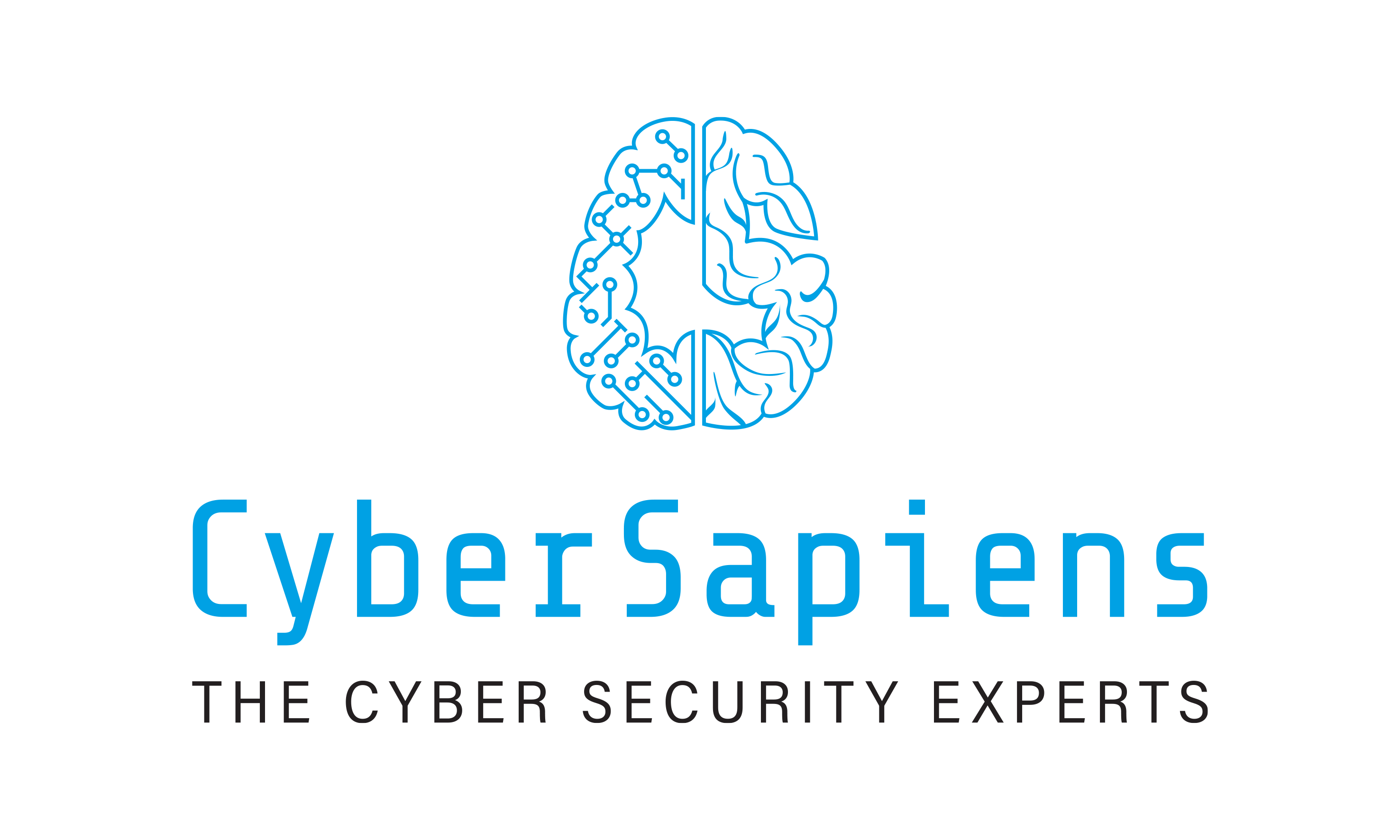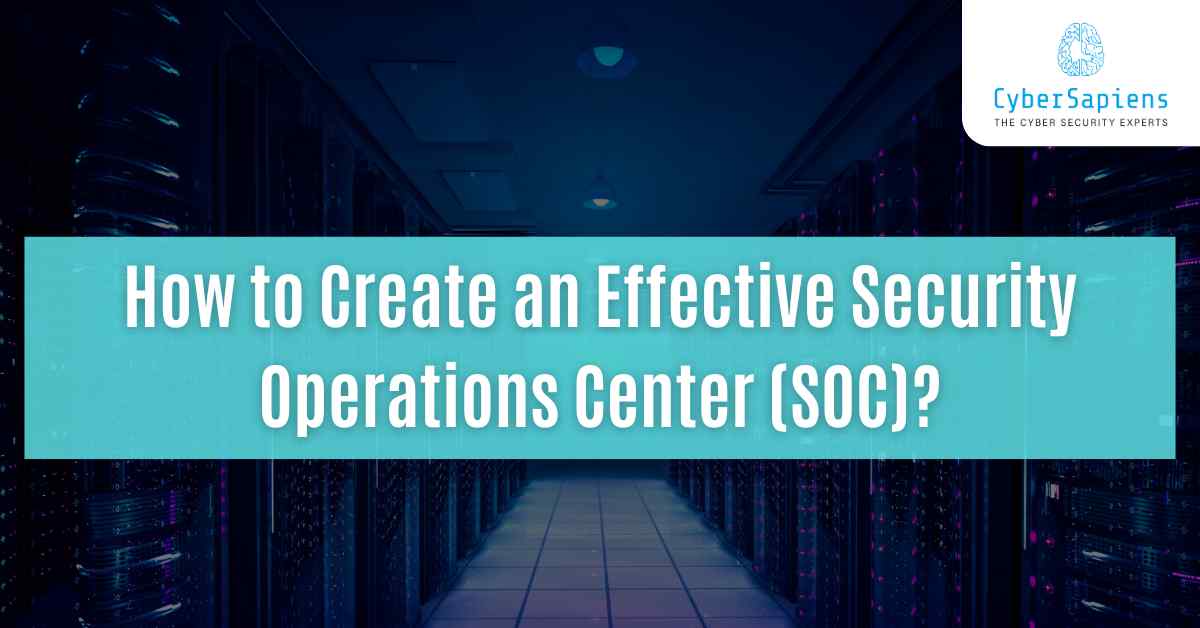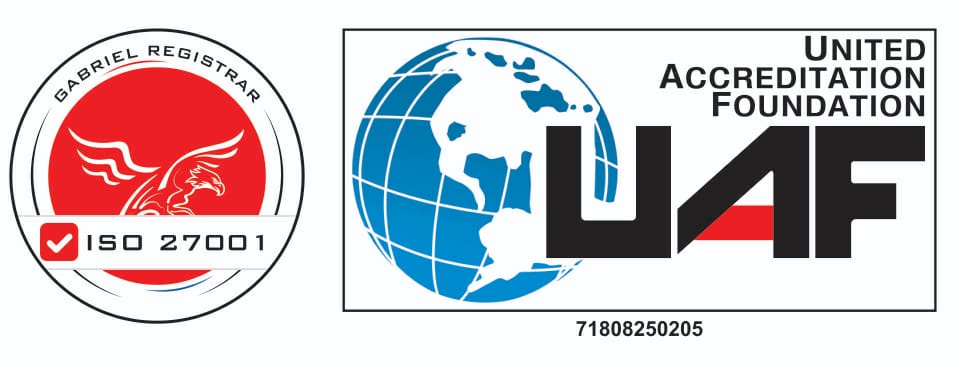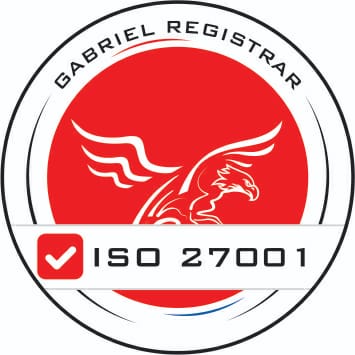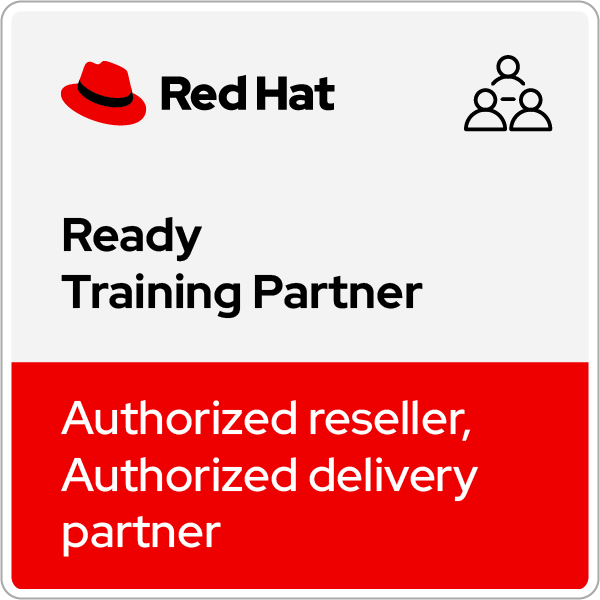In this blog post, we explore the structuring and development of a Security Operations Center (SOC) by focusing on three critical pillars: people, processes, and technology.
The discussion also delves into the common challenges businesses encounter when establishing a SOC, such as attracting and retaining skilled personnel, integrating the right technological solutions, and maintaining regulatory compliance.
By offering practical solutions or a step-by-step framework, the post can effectively guide organisations through these complexities, while also positioning your services as an indispensable resource for those looking to implement or enhance their SOC capabilities.
Today as more commerce and relationships are moving online, the requirement for strong cybersecurity has never been higher.
The Security Operations Center (SOC) is the central nerve system for an organisation’s security posture, ensuring that all threats are found & dealt with as soon as possible.
That said, establishing a high-functioning SOC is not easy work as this must include the right combination of people, processes and technologies.
Top 4 Steps to Create an Effective Security Operations Center (SOC)
1. People Are the New Perimeter for Your SOC
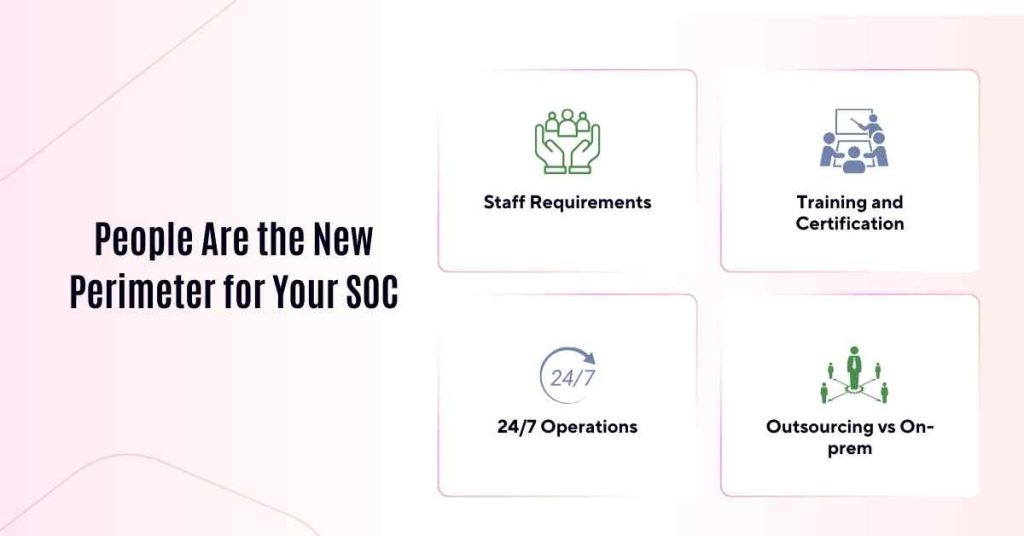
A SOC depends significantly on the competence of its staff. How you can know the right team members for your business:
1. Staff Requirements
When it comes to managing a SOC, experienced security analysts and engineers lie at its heart monitoring systems, responding to incidents and ensuring the proper management of security technologies.
Depending on the size and complexity of your SOC, you may also need specialist roles such as threat hunters, incident responders and forensic analysts.
2. Training and Certification
SOC staff must be continuously trained to keep pace with the latest threats and security trends. With certifications such as CISSP, CEH and SANS GIAC you can make sure that your team is good enough.
It is equally important to encourage your SOC team about the importance of continuous learning and adjustment.
3. 24/7 Operations
Because a SOC is responsible for keeping security operational 24 hours per day, it rarely operates as just one team.
4.5 FTE are required on rotation to staff even one 24/7 position You also need to think and organize well shifts, not overloading them with work leading to burning out or leaving gaps in coverage.
4. Outsourcing vs On-prem
Based on enterprise reqs/budget you might consider a hybrid approach that combines in-house staff with outsourced resources, such as a Managed Security Service Provider (MSSP).
This can provide additional flexibility and expertise, especially for smaller organizations.
2. Processes: Standardizing Security Operations
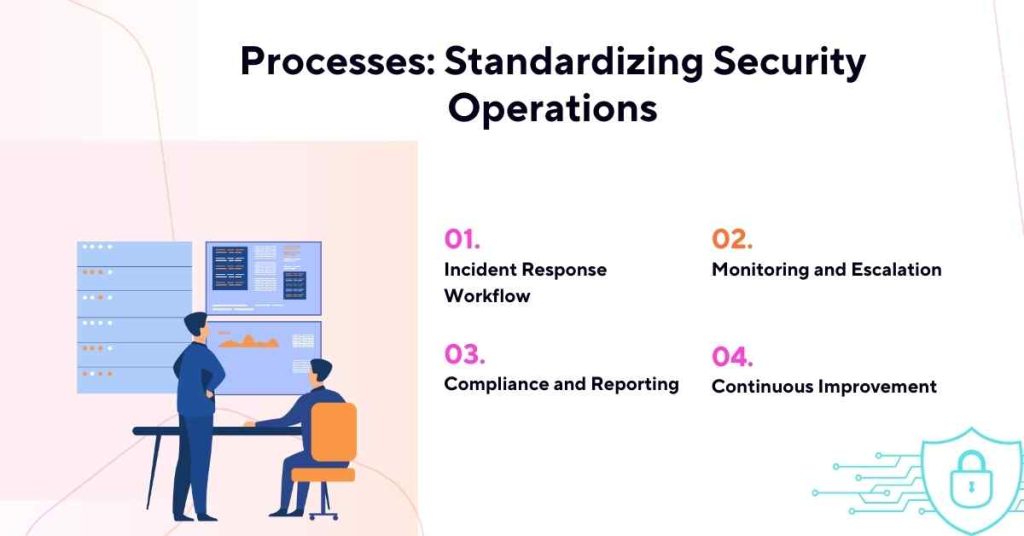
Processes are the glue that holds your SOC together, ensuring that every incident is handled efficiently and consistently.
1. Incident Response Workflow
Establishing a clear, standardized incident response process is crucial. This typically involves preparation, detection, containment, eradication, recovery, and lessons learned.
Each step should be documented, and responsibilities should be clearly defined to avoid confusion during a security incident.
2. Monitoring and Escalation
Define clear procedures for monitoring security events and escalating them when necessary. This involves setting up thresholds for what constitutes an incident and determining the appropriate response levels.
3. Compliance and Reporting
Your SOC should be aligned with relevant industry standards and regulations, such as PCI-DSS, HIPAA, and GDPR.
Regular audits and compliance checks should be part of your process to ensure that your SOC meets all necessary legal and regulatory requirements.
4. Continuous Improvement
Post-incident reviews and lessons-learned sessions are vital for improving processes over time. Use these sessions to refine workflows, update documentation, and provide feedback to staff.
3. Technology: The Tools that Power Your SOC
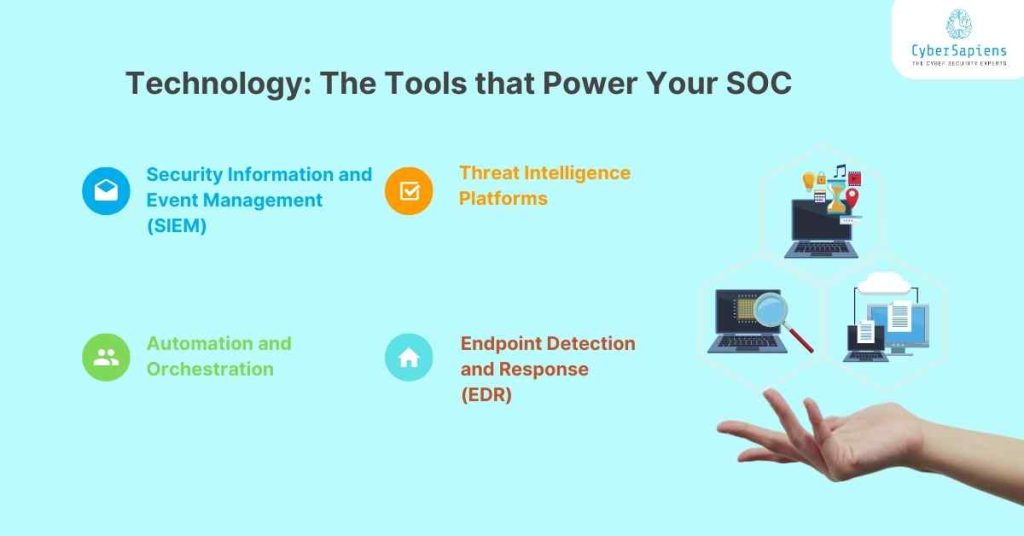
Technology is the engine that drives your SOC’s capabilities. Selecting the right tools and platforms is key to building an effective SOC.
1. Security Information and Event Management (SIEM)
An SIEM system is often the heart of a SOC, aggregating data from various sources, correlating events, and generating alerts. Choosing the right SIEM solution depends on your organization’s size, existing infrastructure, and specific security needs.
2. Threat Intelligence Platforms
Incorporating threat intelligence into your SOC allows for proactive defence strategies by identifying emerging threats before they become incidents. Integrate these platforms with your SIEM for real-time threat detection and analysis.
3. Automation and Orchestration
As the volume of security alerts grows, automation becomes crucial in managing and responding to incidents efficiently.
Security Orchestration, Automation, and Response (SOAR) tools can help automate repetitive tasks and streamline workflows, allowing analysts to focus on more complex threats.
4. Endpoint Detection and Response (EDR)
EDR tools provide visibility into endpoint activities and help detect and respond to threats that have bypassed perimeter defences.
Integrating EDR with your SOC’s overall architecture enhances your ability to detect sophisticated attacks.
4. Integrating People, Processes, and Technology
The real power of a SOC comes from the seamless integration of people, processes, and technology.
For instance, automated tools can help reduce the workload on analysts, but without skilled personnel to interpret the data, the SOC will struggle to respond effectively to incidents.
Similarly, even the best-trained staff need well-defined processes to ensure consistent and efficient operations.
Special thanks to
Chirag Suvarna, Senior Security Analyst at CyberSapiens, for contributing his expertise to this content.
Conclusion
Building an effective SOC requires careful planning and execution across people, processes, and technology.
By focusing on these core components and continuously refining your approach, you can create a SOC that not only protects your organization from current threats but also adapts to future challenges.
This holistic approach not only strengthens your security posture but also positions your organization as a leader in cybersecurity.
FAQs: How to Create an Effective Security Operations Center (SOC)
1. What is a Security Operations Center (SOC)?
Ans: A Security Operations Center (SOC) is a centralized unit that is responsible for monitoring and analyzing an organization’s security posture in real-time, providing 24/7 monitoring and incident response services to identify and respond to security threats quickly and effectively.
2. What are the primary goals of a SOC?
Ans: The primary goals of a SOC are to identify and respond to security threats quickly and effectively, minimize the impact of security incidents, and ensure the confidentiality, integrity, and availability of an organization’s information assets.
3. What are the key components of a SOC?
Ans: The key components of a SOC include a Security Information and Event Management (SIEM) system, threat intelligence feed, incident response team, security monitoring, compliance and policy adherence, and training and awareness.
4. What is the role of a SIEM system in a SOC?
Ans: An SIEM system collects and correlates data from various sources, including network devices, firewalls, and intrusion detection systems, providing real-time monitoring and analysis of security-related data.
5. How do I know if my organization needs a SOC?
Ans: Your organization may need a SOC if you have sensitive information assets to protect, are subject to regulatory compliance requirements, or have experienced security incidents in the past.
6. How do I build a SOC from scratch?
Ans: To build a SOC from scratch, you need to define the SOC’s mission and objectives, establish a governance structure, develop a security monitoring strategy, implement an SIEM system, train the SOC team, establish a threat intelligence feed, implement incident response procedures, and conduct regular security audits and assessments.
7. What are the benefits of having a SOC?
Ans: The benefits of having a SOC include improved incident response times, reduced risk of security incidents, enhanced compliance and policy adherence, improved threat intelligence, and reduced costs associated with security incidents.
8. How do I measure the effectiveness of my SOC?
Ans: To measure the effectiveness of your SOC, you need to track key performance indicators (KPIs) such as incident response times, security incident rates, mean time to detect (MTTD), mean time to respond (MTTR), and customer satisfaction.
9. Can a SOC be outsourced?
Ans: Yes, a SOC can be outsourced to a managed security service provider (MSSP) or a security operations centre as a service (SOCaaS) provider, providing organisations with access to advanced security expertise and resources without the need to invest in building and maintaining a SOC in-house.
10. How much does it cost to build and maintain a SOC?
Ans: The cost of building and maintaining a SOC varies depending on the organisation’s size, complexity, and level of security expertise and resources required.

